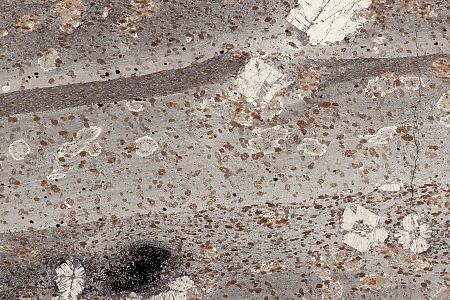
Whole thin-section view of specimen BM-3. Porphyroblasts are andalusite (chiastolite), cordierite (hexagonal outlines) and biotite.

Whole thin-section view of specimen BM-3. Porphyroblasts are andalusite
(chiastolite), cordierite (hexagonal outlines) and biotite.
This rock experienced P-T conditions similar to M32, but its bulk composition has slightly higher Mg/(Mg+Fe). The assemblage is And + Crd + Bt + Ms + Pl + Qtz. Of importance for the microstructure is the abundance of fine graphite and pyrite. The dispersed inert material appears to disrupt the mechanism of coupled mineral replacement. Graphite bars and arcs form against the andalusite {110} growth surfaces, except in certain narrow zones no matrix quartz is entrapped (instead there are some quartz tubules normal to the growth face), and there is no pseudomorphism of matrix microstructure. The growth mechanism probably involved dissolution of quartz and micaceous material from among the opaque granules, displacing them as passive markers, and precipitation onto the porphyroblast growth face.
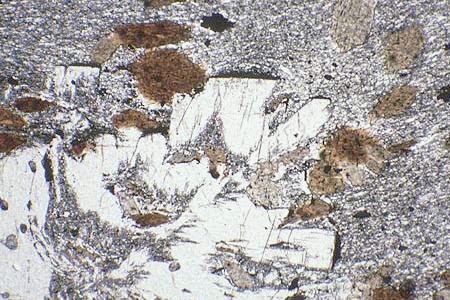
Note how the larger biotite inclusions appear to block the advance of the andalusite growth face, which commonly adopts a poikiloblastic habit behind them, until, perhaps, enough graphite builds up to revert to the previous growth mechanism.
Cordierite in this rock grew in the form of short prisms with a hexagonal cross-section. Now cordierite is preserved only in their cores. Compare the rim replacements with the pseudomorphs in M32 – they are similar (though dominated by sodic plagioclase rather than quartz). Possibly there was initially metastable growth of cordierite here too.
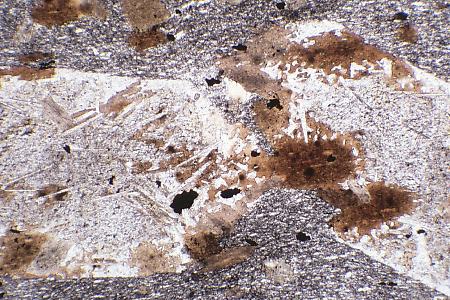
Partly-pseudomorphed cordierites. Note the biotite microstructures: dusty
cores are original inclusions in Crd, skeletal overgrowths grew during breakdown
of cordierite.
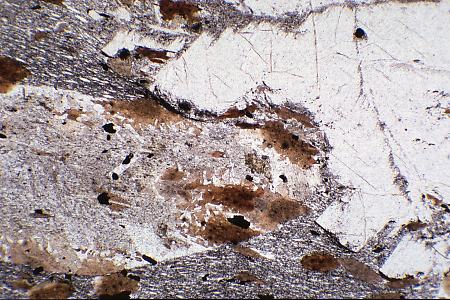
Contact between andalusite and cordierite, best interpreted as impingement
of chiastolite onto pre-existing cordierite.
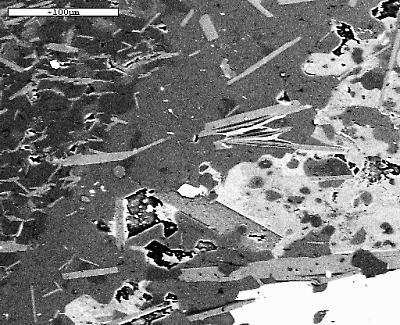
Backscattered electron image of the edge of a relict cordierite poikiloblast (light grey, right), with a breakdown corona of sodic plagioclase (dark grey) and micas.